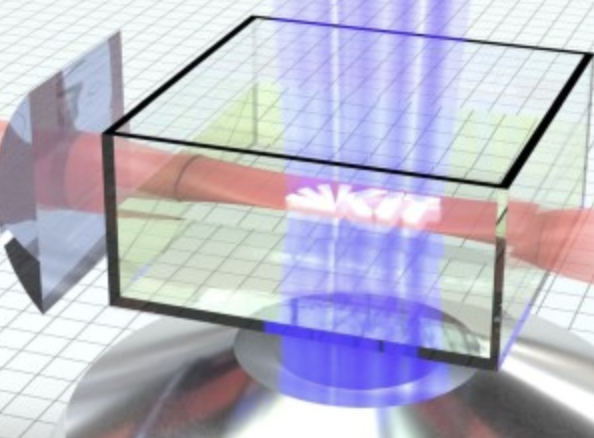Researchers at the Karlsruhe Institute of Technology (https://kit.edu) (KIT), together with colleagues at the University of Heidelberg and Queensland University of Technology, have developed a laser printing process that can print micrometre-sized parts in the blink of an eye. Details can be read in “Nature Photonics”.
“Light-sheet 3D printing
In “light-sheet 3D printing”, blue light is projected into a container filled with a resin. The blue light pre-activates the resin. In a second stage, a red laser provides the additional energy needed to cure the resin. However, 3D printing can only print quickly if the resin quickly returns from its pre-activated state to its original state. Only then can the next layer be printed.
Consequently, the return time dictates the waiting time between two successive layers and thus the printing speed. “With the resin we used, the return time was less than 100 microseconds, which enables high printing speeds,” says KIT researcher and first author Vincent Hahn, clarifying the approach.
Built own printer
To take advantage of the new resin, the researchers built a special 3D printer that uses blue laser diodes to project images into the liquid resin using a high-resolution display with a high frame rate. The red laser is formed into a thin “light sheet” beam and crosses the blue beam vertically in the resin.
With this arrangement, the team has 3D printed micrometre-sized parts in a few hundred milliseconds. However, it should not stop there: “With more sensitive resins, we could even use LEDs instead of lasers in our 3D printer,” adds KIT expert Martin Wegener. “Ultimately, we want to print centimetre-sized 3D structures while maintaining resolution in the micrometre range and high printing speeds.”





